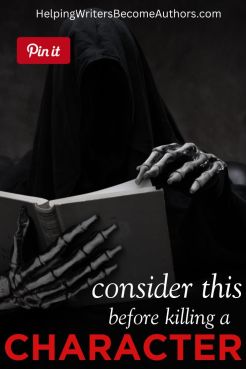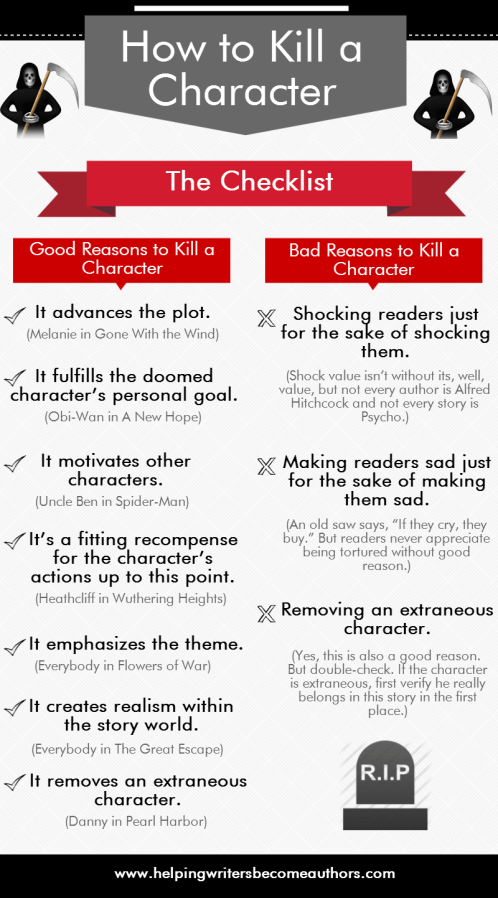 [From KMW: I’m taking a quick sabbatical this week. I’ll be back next Monday with a video/post/podcast about “Scene Structure and Transitions in Big Scenes.” Until then, I hope you enjoy this short post on an important topic!]
[From KMW: I’m taking a quick sabbatical this week. I’ll be back next Monday with a video/post/podcast about “Scene Structure and Transitions in Big Scenes.” Until then, I hope you enjoy this short post on an important topic!]
I have a little game I play when reading a book or watching a movie, especially a violent one. I try to predict if the author will be killing a character. More often than not, I’m right on the money, and it isn’t because I’m prescient or because I cheated and peeked ahead. It’s because character deaths are often formulaic.
Half the time, authors seem to axe characters for no other reason than the characters are likable and the authors want to wring a few honest tears from their readers. However, this isn’t really honest storytelling. Aside from the fact that readers may be righteously indignant over the unnecessary death of a favorite character, they’ll also resent being manipulated should they figure out what’s going on.
Of course, we could argue all of storytelling is manipulation since as authors we purposefully craft words and themes to guide our readers’ thoughts and emotions in the direction we want them to go. Readers accept and even embrace this. What they ask in return is that we manipulate them with style—and subtlety.
That means killing a character, like every other part of your story, must be organic. Character deaths must make sense within the context of the story, and they must move the plot forward.
Snuffing everybody’s favorite sidekick just because somebody’s gotta get hit by a random bullet and because he’s the character readers are most likely to sniffle over is a bad methodology. For a character’s death to work in a story—for it to resonate—it has to mean something. Unless your whole point is to illustrate random violence, make certain there’s a good reason this particular character has to die.
You have to compensate readers for the loss of a beloved personality. Not only will this make it more difficult for them to suspect the death beforehand, it will also allow the death to carry more emotional and thematic weight.

>>For more on how to do this, read “How to Successfully Kill a Character: The Checklist” (as featured on NPR)






